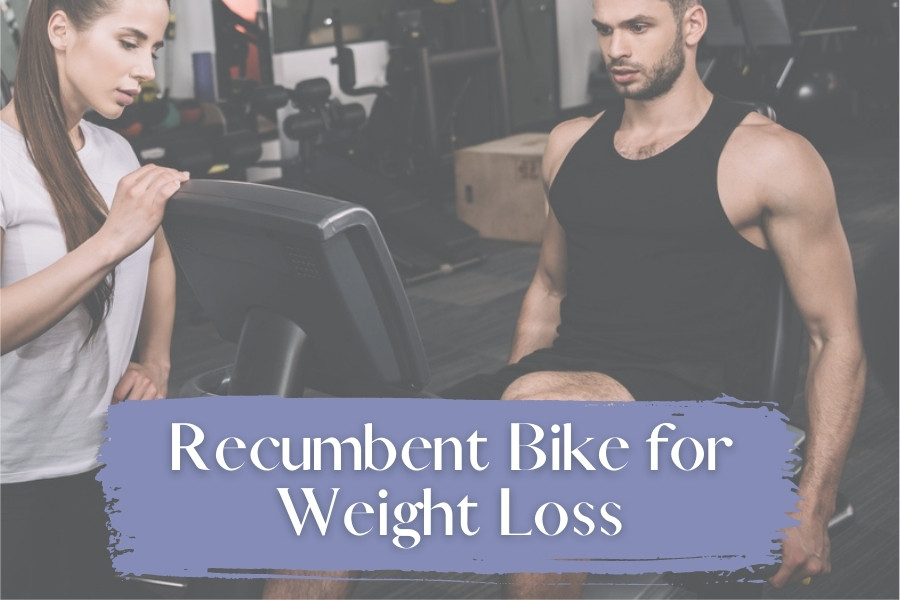
Certified Spinning® Instructor & CPT
People have a variety of goals and reasons for why they decide they want to improve their body composition. However, one of the biggest reasons we hear is that people want to lose weight to improve their health.
Are you considering a recumbent
What Is a Recumbent Bike ?

A recumbent
Recumbent Exercise Bike Benefits
Comfort
A larger, more comfortable seat is just one of the great benefits of a recumbent
Easy on the Body
Not only is biking easier on joints since it is a non-impact exercise, but a recumbent
Challenging for Riders of All Fitness Levels
Preset programming is usually included in the console of these models allowing riders to select workouts and resistance levels that continue to be challenging. This helps build cardiovascular endurance, which provides benefits such as decreasing the chance of heart disease, diabetes, and stroke, building bone density, increasing stamina and strength, and assisting with weight management.
Muscles Worked with a Recumbent Bike
A recumbent
Glutes
The glutes or buttock muscles are one of the leading powerhouse muscle groups for biking. Gluteus Medius, Maximus, and Minimus drive power through hip extension during the pedal stroke.
Quadriceps
The quadriceps have four different muscles: Vastus Lateralis, Vastus Medialis, Vastus Intermerdias that help with knee extension, while Rectus Femoris assists with knee and hip extension.
Hamstrings
The muscles Semitendinosus, Semimembranosus, and Bicep Femoris form the hamstring and are responsible for knee flexion and hip extension.
Shins
The anterior tibialis muscle helps with dorsiflexion (points the toes up).
Calves
The two main muscles of the calf that are activated while riding a recumbent
Note: Using a recumbent bike with arms or a recumbent cross trainer like the Teeter FreeStep LT3, you might also target your biceps and triceps;
Is a Recumbent Bike Good for Weight Loss?
Recumbent bikes can be good for weight loss as working out will increase your daily calorie expenditure. They offer a low-impact workout, easier on joints such as knees, hips, and ankles. The
*It is important to note that losing weight is a three-pronged approach, including cardiovascular exercise, weight training, and, most importantly, fueling your body correctly.
Tips & Factors to Burn More Calories with a Recumbent Bike
When it comes down to maximizing your workouts on a recumbent
Frequency
How often you are using your recumbent
Intensity
Intensity plays a significant role in busting through plateaus. I always tell my clients to get comfortable with the uncomfortable. Varying your intensity levels not only makes your workouts more fun but also helps to keep your body guessing. For example, a Tabata workout requires a very high-intensity output and shorter workout time while offering a caloric afterburn of 9X higher than an endurance ride.
Time
The amount of time spent on your recumbent
Recumbent vs. Upright vs. Indoor Cycle Comparison
There are a few differences in overall muscle recruitment when riding recumbent, upright, and indoor cycles. Since all three exercise
For example, a study published by the International Journal of Sports Physical Therapy found that the semitendinosus (part of the hamstring) and tibialis anterior (shin) had greater activation while riding in a recumbent position compared to that of an upright position. In contrast, greater output from the Rectus Femoris (part of the quadriceps) was seen when riding upright. In addition, since recumbent bikes include a backrest, the abdominals are not required to engage to maintain proper positioning. Finally, although indoor cycles are also considered a type of upright cycle, due to their flywheel design and the ability for riders to also train out of the saddle, they require more muscle recruitment.
| Recumbent | Upright | Indoor | |
|---|---|---|---|
| Hamstrings | Yes | Yes | Yes |
| Quadriceps | Yes | Yes | Yes |
| Glutes | Yes | Yes | Yes |
| Shins | Yes | Yes | Yes |
| Calves | Yes | Yes | Yes |
| Core | No | Yes | Yes |
| Upper Body | No | No | Yes |
The Bottom Line
Any exercise that you commit to has the opportunity to result in weight loss. However, remember that there is more to weight loss than just increasing your cardio output. Nevertheless, a recumbent
